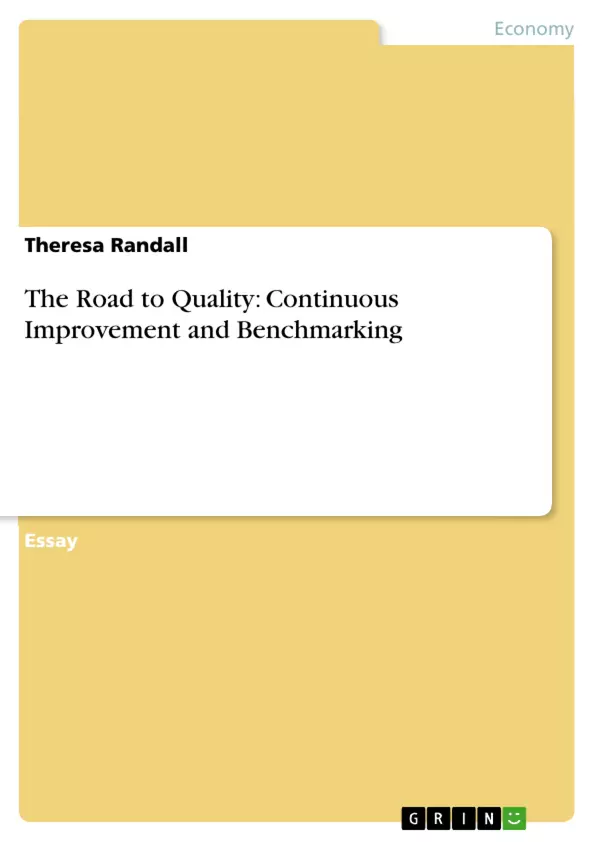“Continuous improvement is better than delayed perfection” – Mark Twain. Organizations can appreciate Mark Twain’s philosophy when they decide quality is a top priority and seek a continuous improvement initiative. In order for a corporation to remain competitive in the 21st century, it must be able to identify how it measures against other corporations and its competitors. After a corporation contrasts itself against others, it must be able to continuously change and improve its strategy and processes. It is crucial that corporations remain competitive and responsive to their customers’ needs. Benchmarking and continuous improvement allow organizations to compare themselves to industry leaders and improve its’ processes and products by employing total quality management. For a corporation to implement continuous improvement and benchmarking, it must familiarize itself with the current trends and issues, influential organizations, best practices, and important theories and concepts.
Inhaltsverzeichnis (Table of Contents)
- Quality
- Current Trends and Issues
- Influential Organizations
- Best Practices
- Important Theories and Concepts
Zielsetzung und Themenschwerpunkte (Objectives and Key Themes)
This paper examines the concepts of continuous improvement and benchmarking, emphasizing their significance in achieving quality and competitiveness within organizations. It explores the current trends and issues surrounding these practices, highlighting their impact on various aspects of business operations.
- The importance of quality in organizational success and differentiation.
- The principles of quality management, including customer focus, continuous improvement, benchmarking, just-in-time inventory, and Total Quality Management (TQM).
- The application of continuous improvement and benchmarking in both manufacturing and service environments.
- The role of outsourcing in achieving continuous improvement and cost reduction.
- The ethical considerations involved in implementing continuous improvement strategies.
Zusammenfassung der Kapitel (Chapter Summaries)
- Quality: This chapter introduces the concept of quality and its significance in a corporation's success. It emphasizes that quality is not just a goal but a continuous process that requires a commitment to customer focus, continuous improvement, benchmarking, just-in-time inventory, and Total Quality Management (TQM).
- Current Trends and Issues: This chapter discusses current trends and issues in continuous improvement and benchmarking. It highlights the importance of continuous quality improvement, the use of just-in-time (JIT) inventory, and the role of benchmarking in achieving performance excellence. It also explores the ethical challenges associated with these practices.
Schlüsselwörter (Keywords)
This work focuses on the concepts of continuous improvement, benchmarking, quality management, Total Quality Management (TQM), just-in-time inventory, outsourcing, and ethical considerations in operations management.
- Quote paper
- Theresa Randall (Author), 2011, The Road to Quality: Continuous Improvement and Benchmarking, Munich, GRIN Verlag, https://www.grin.com/document/180621



